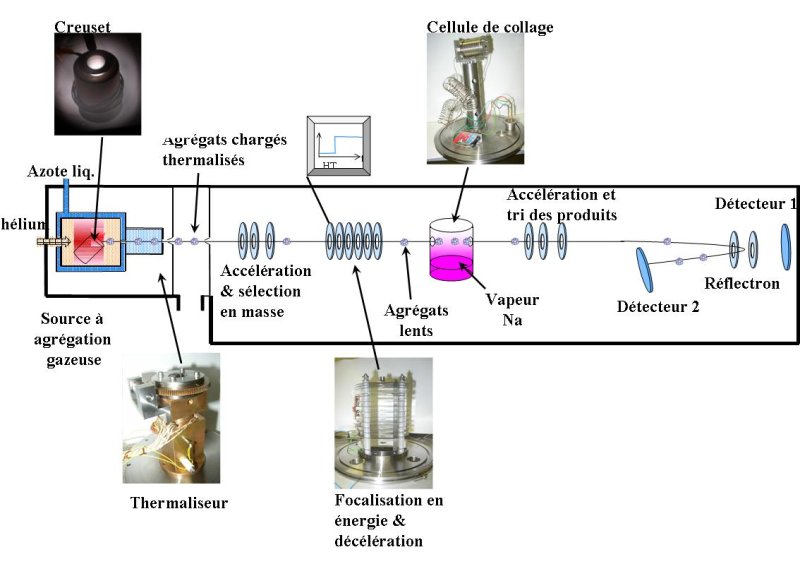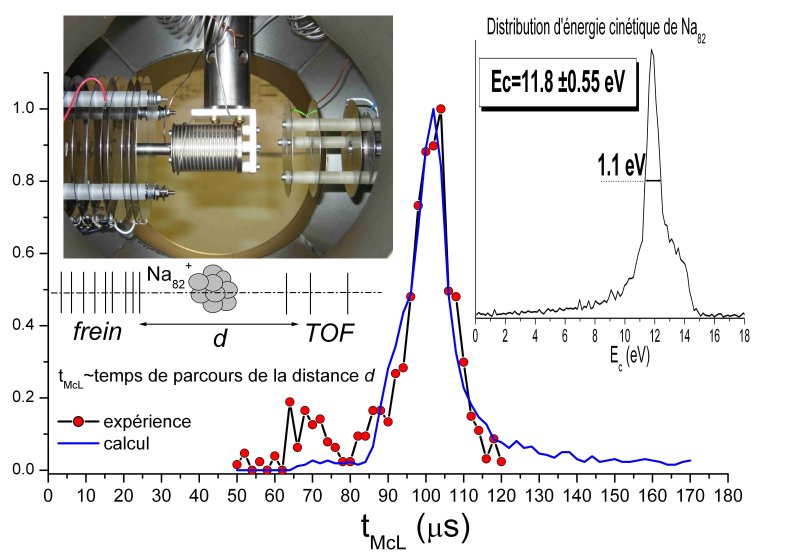1. Principle of the experiment
The principle of the experiment is sketched below. Clusters are produced in a gas aggregation source and are ionized by a hollow cathode discharge. Then, their temperature is fixed by collisions with an inert gas, whose temperature is set by a copper housing, between 25K and 500K. The clusters are next mass selected in a time-of-flight device. In order to have any chance of observing sticking, the clusters must be very strongly slowed down (the kinetic energy must be of the order of 1 eV at the most in the center of mass frame) before interacting with the vapour in the cell. Indeed, if the collision energy exceeds by far the binding energy of one atom in the cluster, which is about 1 eV, then the cluster will evaporate one or more atoms, which is an effect exactly opposite to the expected one !
The clusters are focussed in energy and slowed down by an original set-up. Thanks to this element, we will thus obtain, before entering the collision cell, a cluster with controlled size and kinetic energy (the temperature has also been constrained before), and that we can choose at will. The last step consists in analysing the products coming out of the cell. This is done by the use of a second time-of-flight, which allows us to determine the masses produced.
4. Energy focussing and slowing down
After they have been energy focussed, the clusters are slowed down by passing through a potential barrier. When the clusters reach the end of the barrier, the potential is suddenly shut down.
On the photo below one can see on the left part of the electrodes used to slow down the clusters. After this step they enter the collision cell (centre of the photo) and then freely fly until they reach the second Willey-McLaren (WMcL II, right part of the photo).
The WMcL II reaccelerates the clusters towards the detector. Knowing the time it takes the clusters to fly between the end of the barrier and the WMcL II gives us directly access to the speed of the clusters.
Furthermore we can collect the signal on the detector as a function of the delay at which the potential is established on the WMcL II. From this signal we can deduce the kinetic energy distribution of the clusters.
As seen below, we get, for clusters of size n = 82, a kinetic energy distribution centred at 12 eV and with a FWHM on the order of 1eV !!
3. Energy focussing and slowing down clusters : the movie :
4. Simulation of the clusters propagation :
This movie is a simulation of the clusters trajectories in our experimental setup.














